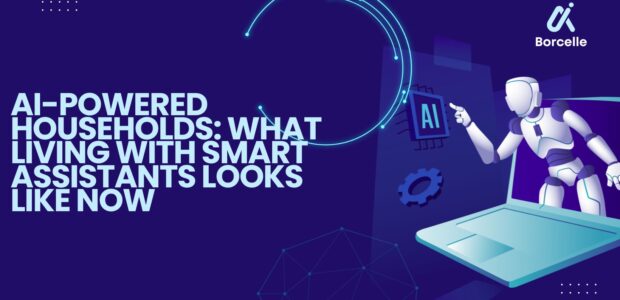AI-Powered Households: What Living with Smart Assistants Looks Like Now
In 2025, the phrase “smart home” means more than just voice commands and lighting presets. Thanks to rapid advancements in artificial intelligence, today’s homes are becoming interactive ecosystems—intelligent, intuitive, and increasingly human-aware.
We’ve entered the era of AI-powered households, where digital assistants don’t just obey—they anticipate, adapt, and even learn your preferences before you voice them. This blog explores how smart living has evolved, the key features of AI-driven homes, and how they’re transforming everything from morning routines to family dynamics.
🏡 What Is an AI-Powered Household?
An AI-powered household is more than a collection of smart devices. It’s a connected environment where an intelligent system coordinates your home’s functions—lighting, temperature, appliances, entertainment, security, and even wellness—based on patterns, behaviours, and spoken or unspoken preferences.
Unlike early smart homes, which required manual control via apps or commands, AI households learn, automate, and optimise in real-time.
🧠 How AI Has Changed the Way We Live
1. Predictive Living
Your home knows when you wake up, how you like your coffee, and what lighting you prefer on rainy days. AI uses data from your routines to:
-
Preheat the oven before dinner
-
Lower the blinds as the sun sets
-
Suggest music or podcasts based on your mood
2. Personalised Environments
Every member of the household gets a custom experience:
-
Your playlist fades in when you enter a room
-
Your child’s study assistant activates during homework hours
-
Your partner gets reminders tailored to their calendar and goals
AI adapts to voice, face, or location—so it knows who is home and what they need.
3. Energy Efficiency & Sustainability
Smart thermostats like Nest, water trackers, and appliance timers now run on predictive AI, cutting waste by:
-
Learning occupancy patterns
-
Powering down unused zones
-
Suggesting optimal settings to reduce bills and carbon footprint
🛠️ Top Features of an AI-Driven Home in 2025
🔊 Multi-Modal Smart Assistants
Devices like Alexa GPT, Google Gemini Home, or Apple Intelligence Hub go beyond voice—they use cameras, sensors, and AI to read context. They can:
-
Detect emotional tone
-
Respond with empathy or humour
-
Coordinate tasks across all devices
🧹 Autonomous Household Help
AI-powered robots handle:
-
Cleaning (vacuum, mopping, window washing)
-
Laundry sorting
-
Even simple cooking with smart recipes and robotic arms
🧘 Wellness & Mood Monitoring
Smart homes now track your health:
-
Suggest breaks if stress is detected via voice or posture
-
Adjust lighting and scent to reduce anxiety
-
Recommend meals based on your activity and sleep quality
🔒 Advanced Home Security
AI integrates with facial recognition, motion sensors, and drone cameras to offer:
-
Real-time alerts
-
Behavioural anomaly detection (e.g. someone loitering near your door)
-
Remote lockdown and voice-controlled emergency services
👨👩👧 How Families Use AI at Home
-
Parents use AI tutors for children’s homework help and schedule balancing.
-
Remote workers rely on noise-cancelling smart pods, AI-assisted focus playlists, and real-time transcription.
-
Elderly family members benefit from fall detection, medication reminders, and companionship through conversational AI.
-
Pet owners use smart feeders, tracking collars, and home cameras that notify them if their dog is anxious.
⚖️ Benefits vs Concerns of AI at Home
Benefits:
-
Increased comfort and convenience
-
Customisation for every lifestyle
-
Time savings and mental load reduction
-
Improved energy use and sustainability
Concerns:
-
Privacy: AI must collect data to learn—raising questions about who has access.
-
Over-dependence: People may lose basic skills or boundaries with tech.
-
Cost: Not all AI tools are affordable or easy to integrate across brands.
🔮 The Future of AI Homes
-
Fully voice-free interaction using gestures, gaze, or thought-assisted devices
-
Emotional AI that senses stress or joy and responds proactively
-
AI “house managers” that coordinate home maintenance, bills, and supplies
-
Neural interface integration (early-stage now) where your thoughts can control smart home functions
In the future, AI won’t just make life easier—it may help reshape what home means: a space that supports health, creativity, safety, and peace.
💬 Final Thoughts
AI-powered households in 2025 are no longer science fiction—they’re a daily reality for millions. By blending automation with intelligence, these homes offer comfort without compromise, freedom without forgetting, and personalisation that feels human.
Your home isn’t just smart. It’s learning to take care of you.


